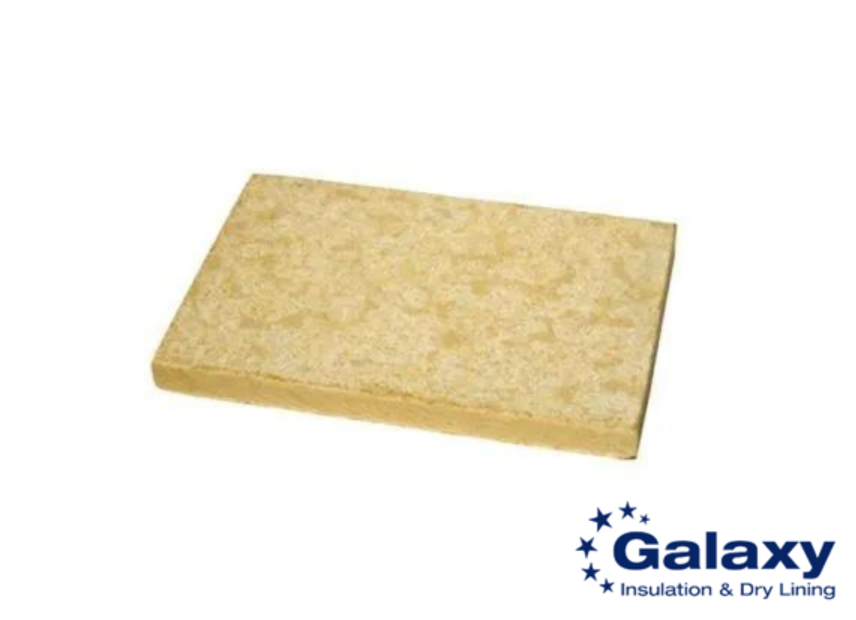Insulating your home is not merely a trend but a necessity in the modern world. The focus has shifted towards energy-efficient building materials that don’t compromise performance.
Among the forerunners in this sector is Rockwool wall insulation, a game-changer when it comes to both internal and external wall insulation. This article aims to demystify Rockwool insulation and explore how it can be the right choice for your property.
Why Choose Rockwool?
- Unmatched Thermal Efficiency: When it comes to thermal insulation, Rockwool is unparalleled in its performance. Crafted from stone wool, a natural material, Rockwool insulation minimises heat transfer, keeping your indoor temperature consistent regardless of external weather conditions. This thermal efficiency is vital for those living in areas with extreme temperatures, as it significantly reduces the reliance on heating or cooling systems, leading to substantial energy savings.
- Impenetrable Fire Resistance: Perhaps one of Rockwool’s most notable attributes is its extraordinary fire resistance. Stone wool, the primary component of Rockwool, has a melting point that exceeds 1,000 degrees Celsius. This makes it highly resistant to fire, thereby contributing to the overall safety of your building. In the unfortunate event of a fire, Rockwool insulation can prevent the spread of flames, providing precious extra minutes for evacuation and minimising property damage.
- Superior Acoustic Insulation: In today’s day and age, the tranquillity of your home is invaluable. Rockwool insulation is engineered to absorb sound waves, significantly reducing the transmission of noise through walls and ceilings. Whether it’s the cacophony of city life or just reducing the noise levels within a busy household, Rockwool can create a much quieter, peaceful living environment.
Applications: Internal and External Walls
Insulating Internal Walls
- Thermal Regulation: For internal walls, Rockwool’s thermal efficiency is a game-changer. It keeps individual rooms at a comfortable temperature, cutting down the need for additional heating or cooling. This is particularly beneficial in structures with multiple functional spaces, such as homes with home offices, where temperature requirements might vary.
- Ease of Installation: One of the often-overlooked advantages of Rockwool is the ease with which it can be installed. Its versatile rolls and slabs fit easily between studs and joists, eliminating any gaps that might compromise insulation effectiveness.
- Synergy with Knauf Wallboard: Pairing Rockwool insulation with knauf wallboard can amplify its insulating capabilities. Knauf wallboard is known for its high performance in thermoregulation and soundproofing, making it an excellent companion to Rockwool’s already impressive features.
Insulating External Walls
- Weather Resilience: Rockwool’s external wall insulation stands up well to the elements. It is water-repellent yet vapour-permeable, preventing moisture buildup within the wall structure. This attribute is crucial in areas prone to heavy rainfall or humidity.
- Pairing with Siniat Weather Defence: Combining Rockwool with siniat weather defence boards adds an extra layer of protection against harsh weather conditions. Siniat weather defence is known for its superior weatherproofing qualities, making it a smart choice for external applications.
- Compatibility with RCM Y Wall: For those considering the rcm y wall system for external walls, Rockwool serves as an excellent base material. It not only adds thermal and acoustic insulation but also provides structural integrity, thus enhancing the overall performance of the wall system.
Installation Tips for Rockwool Insulation
Before jumping into the installation process, it’s critical to have a thorough understanding of best practices. Doing so ensures that you reap all the benefits that Rockwool wall insulation has to offer. Here are some tips to consider:
- Safety First: Although Rockwool is made from natural materials, safety gear is essential during installation. Make sure to wear gloves to protect your hands from minor irritations. A mask can help you avoid inhaling any fine particles, while safety goggles will protect your eyes from any potential irritants.
- Preparing the Area: Before starting, ensure the wall cavities are clean and free of debris. Any wiring, plumbing, or other installations should also be properly covered or moved out of the way to make the process smoother. An unobstructed work area allows for a more efficient installation, ensuring the insulation fits perfectly into its designated space.
- Measure Twice, Cut Once: Precision is key when it comes to insulation. Accurately measure the area to be insulated and cut the Rockwool material accordingly. A well-fitted insulation slab or roll maximises its thermal and acoustic properties, leaving no room for gaps that could compromise efficiency.
- Moisture Barriers: If you’re installing Rockwool in external walls, consider installing a vapour barrier on the warmer side of the insulation. This practice helps to prevent moisture build-up, thereby extending the life of your walls and the insulation itself.
- Complementary Materials: To maximise the benefits of Rockwool insulation, consider pairing it with other high-quality materials. For instance, knauf wallboard can be used on the interior side for additional thermal and acoustic performance. For external applications, rcm y wall or siniat weather defence can offer extra waterproofing and structural integrity.
- Fastening the Insulation: Depending on the type of wall and the form of Rockwool you’re using— whether it’s rolls, batts, or loose-fill— the method for securing it in place will vary. Typically, specialised adhesives, clips, or mechanical fasteners are used to ensure the insulation stays securely in place.
- Post-Installation Check: After installation, it’s important to review your work. Check for any potential gaps or misalignments and correct them immediately. This is the time to ensure that the insulation is securely in place and provides complete coverage.
- Consult Professionals: If you’re not comfortable taking on the installation yourself, don’t hesitate to seek professional help. Specialists can make sure the insulation is correctly installed, helping you get the most out of your investment.
Choose Galaxy Insulation for Your Rockwool Needs
When it comes to providing top-notch insulation solutions, Galaxy Insulation is a name you can trust. As an employee-owned business with a commitment to quality and customer satisfaction, they are your go-to source for all things insulation. Galaxy’s experienced team is always on hand to provide expert advice and ensure you find the Rockwool product that best meets your needs. So why wait? Choose Galaxy Insulation today and take the first step towards a more comfortable, safer, and energy-efficient future.
Author Bio
Cinthia Rosa
As an Insulation Expert at Galaxy Insulation and Dry Lining, UK, Cinthia’s contribution to the company’s growth has been invaluable. She has amassed abundant knowledge and technical know-how regarding insulation products, which she consistently shares with the masses through engaging and informative blogs.
https://www.linkedin.com/company/galaxy-insulation-and-dry-lining-ltd/





